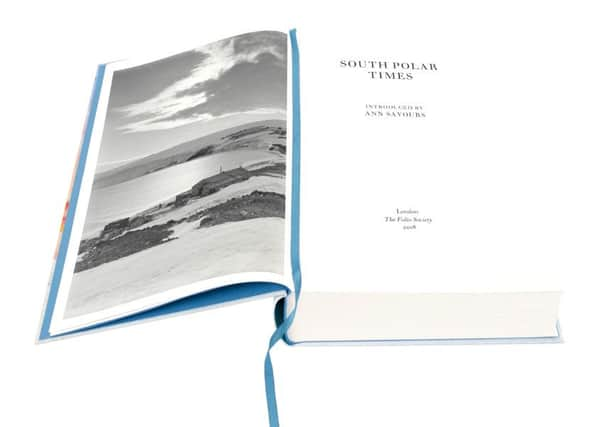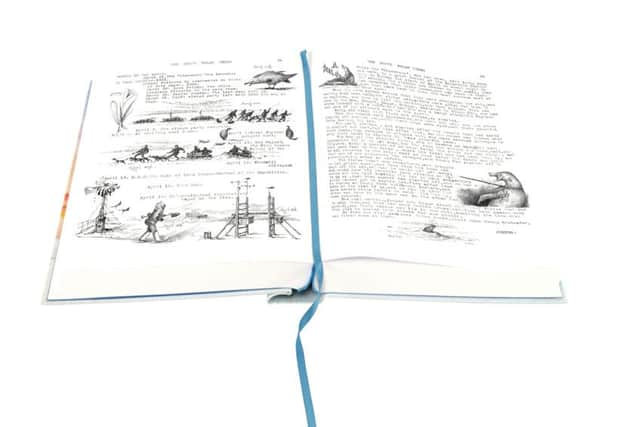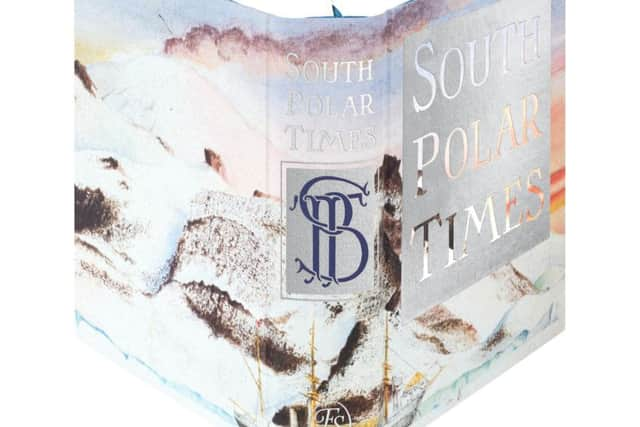Dramatic increase in readership forecast for South Polar Times


Until recently, however, in spite of all this interest in the Heroic Age of Exploration there has been one publication from the period which it has been almost impossible to get your hands on: The South Polar Times.
Produced by the crews of Scott’s Discovery expedition of 1901-4 and his ill-fated Terra Nova expedition of 1910-13, and running to a total of 12 editions, this wide-ranging periodical was an odd mixture of scientific reports, climate stats, poems, paintings, drawings, jokes, caricatures and other ephemera. In his 1905 book Two Years in the Antarctic, Lieutenant Albert B Armitage described how, at a meeting on board the Discovery, the decision was taken to bring out a regular expedition journal, with Shackleton as editor and Edward Wilson as the principal artist. It was to be, wrote Armitage, “the most amusing, instructive, up-to-date journal, with the largest circulation of any periodical within the Antarctic Circle.” That circulation would be a grand total of one copy per edition, which would be read aloud to all hands upon completion before being circulated among the crew.
Advertisement
Hide AdScott noted in his journal that each copy was “made as complete and perfect as possible under our circumstances, in the hope that the whole thing may be thoroughly well reproduced with all the illustrations when we get home,” but for over 100 years, that hope remained a vain one: the only way to see a copy of the South Polar Times was to visit the collections of the Royal Geographical Society, the British Library and the Scott Polar Research Institute, where the originals were kept.


In 2012, to mark the centenary of Scott’s death, the Folio Society produced a limited edition box set containing replicas of the 12 magazines. Given that it was priced at just shy of £500, however, it would hardly have been a realistic purchase for most polar enthusiasts.
But now, at last, The South Polar Times is available to those of more modest means. Earlier this month, all 12 editions of the magazine were published together as one volume for the first time, again by the Folio Society. Admittedly the £100 price tag is still pretty steep for a book, but for the armchair polar explorer who has everything, this would make the ultimate gift, and Final Words predicts that the publishers will receive a flurry of orders in the run-up to Christmas.
The scientific achievements of Scott’s expeditions have long been overshadowed by the fact that he was beaten to the Pole by Amundsen in 1912, after which his name became synonymous with heroic British failure. But these journals show that, in contrast to Amundsen, who was largely treating Antarctica as a novel location for a spot of exercise, Scott and his men were engaged in a wide variety of research; exploring the continent’s interior was only one aspect of a multi-faceted expedition.
In the August 1903 edition of the SPT, for example, there is a paper outlining “some of the physical observations being conducted in Winter Quarters and the purpose of such investigations,” the principal ones being “Magnetic, Seismic, Atmospheric Electricity, Pendulum observations to determine the Force of Gravity, and observations on the Aurorae,” and there is also an article entitled “Notes on Some Antarctic Birds” which goes into great detail about the appearance, diet and nesting habits of the Snow Petrel, the Antarctic Petrel and the Skua. These more serious essays were interspersed with lighter material, such as a report of a draughts tournament (“the only thing that prevented betting was the lack of money”), a humorous “Ode to a Penguin” and a cod-epic poem entitled “The Spook of Ski Slope,” in which a member of the Discovery party is challenged to a moonlit ski race by a creature who may or may not have been the devil himself. All members of the expedition were invited to contribute to the SPT and their work was published under pseudonyms. As a result, there’s a boisterous, playful atmosphere to these pages that never really comes across in the more guarded “official” reports of the expeditions, written, as all such documents are, with one eye on posterity.


If you want to know what happened on these expeditions, then, read Scott’s journals; but if you want to get an idea of what it felt like to spend a long, dark winter down there at the bottom of the Earth all those years ago, read the South Polar Times.
The Folio Society edition of The South Polar Times, written by the members of the Discovery and Terra Nova expeditions, is available exclusively from www.foliosociety.com